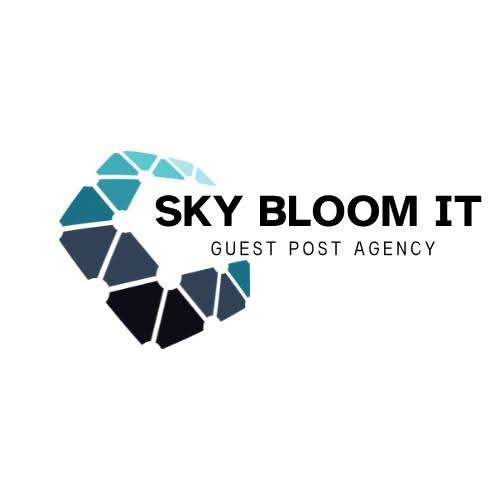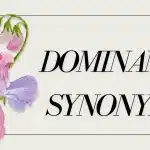Unlocking the optimal workforce strategy for your business amidst evolving IT demands and talent shortages.
Key Insights into IT Staffing:
- Dynamic IT Landscape: The year 2025 is marked by an accelerating digital transformation and a significant global IT talent shortage, making strategic hiring decisions more critical than ever.
- Flexibility vs. Stability: IT staff augmentation offers unparalleled flexibility, rapid access to specialized skills, and cost efficiency for short-term needs, while traditional hiring builds stable teams with strong cultural integration and long-term loyalty for core functions.
- The Hybrid Advantage: Many forward-thinking organizations are adopting a hybrid approach, combining a strong core of permanent employees with augmented staff for specialized or temporary projects, leveraging the best of both models.
In today’s rapidly evolving business environment, organizations are constantly challenged to scale their teams effectively while maintaining flexibility and efficiency. The IT sector, in particular, faces unprecedented demand for specialized skills, exacerbated by a global talent shortage projected to impact businesses significantly by 2025.
Against this backdrop, two primary strategies for acquiring IT talent emerge: IT staff augmentation and traditional hiring. Each approach presents distinct advantages and disadvantages, and the optimal choice hinges on a company’s specific project needs, budget constraints, and long-term strategic goals.
Decoding the Core Concepts: What Are These Hiring Models?
To make an informed decision, it’s crucial to understand the fundamental definitions and characteristics of both IT staff augmentation and traditional hiring.
IT Staff Augmentation: A Flexible Approach
IT staff augmentation is a strategic outsourcing model where external professionals are temporarily integrated into an existing internal team. This approach is designed to address specific skill gaps, manage workload spikes, or support projects requiring specialized expertise without the commitment of a full-time hire. The augmented staff works directly under the client’s management, ensuring maintained control over project execution and processes.
An illustration depicting the concept of IT staff augmentation, showing external talent integrating with an existing team.
Key Characteristics of Staff Augmentation:
- Temporary Integration: Professionals are brought in for defined periods or specific projects.
- Skill-Gap Filling: Ideal for accessing niche skills like AI, machine learning, cloud computing, or cybersecurity that may not be available internally.
- Client Control: The client retains direct management and oversight of the augmented staff.
- Reduced Overhead: Typically involves lower long-term costs compared to traditional hiring due to the absence of benefits, recruitment fees, and extensive onboarding.
Traditional Hiring: The Established Path
Traditional hiring involves the conventional process of recruiting and employing full-time staff members who become permanent additions to the company’s workforce. This model focuses on building a dedicated, culturally aligned in-house team with long-term employment commitments.
A visual representation of a traditional office workspace, symbolizing the in-house team environment.
Key Characteristics of Traditional Hiring:
- Permanent Employment: Employees are recruited for long-term roles with full-time commitments.
- Cultural Alignment: Emphasizes integrating individuals deeply into the company culture and values.
- Comprehensive Benefits: Involves providing salaries, benefits, training, and often office space.
- In-house Control: The company has complete control over employee management, development, and career progression.
The Evolving IT Hiring Landscape in 2025
The year 2025 presents a dynamic and challenging environment for IT recruitment. Several key trends are shaping how businesses approach talent acquisition:
- Global IT Talent Shortage: A significant scarcity of skilled IT professionals is anticipated, with projections indicating a substantial talent gap that could lead to considerable revenue loss for businesses. This shortage is particularly acute in highly specialized areas.
- Accelerated Digital Transformation: Businesses are rapidly adopting new technologies, demanding niche expertise in areas like AI, machine learning, cloud computing, cybersecurity, and DevOps.
- Rise of Remote and Hybrid Work: The shift towards flexible work models has broadened talent pools, making global sourcing more feasible and competitive.
- AI-Driven Recruitment: Artificial intelligence is increasingly being leveraged to automate recruitment tasks, enhance candidate matching, and streamline hiring processes for both traditional and augmented staffing.
- Skills-Based Hiring: There’s a growing emphasis on assessing candidates based on proven skills and capabilities rather than solely on traditional credentials, which impacts hiring speed and efficiency.
These trends highlight the imperative for organizations to adopt flexible and intelligent staffing strategies to remain competitive and meet evolving project demands.
A Comparative Analysis: Staff Augmentation vs. Traditional Hiring
| Aspect | IT Staff Augmentation | Traditional Hiring |
|---|---|---|
| Time to Fill | Days to weeks; rapid deployment of pre-vetted talent | Weeks to months; lengthy recruitment and onboarding cycles |
| Cost Structure | Variable; lower upfront costs, pay for actual work period (no benefits/overhead) | Fixed; higher total costs (salaries, benefits, taxes, training, office space) |
| Flexibility & Scalability | Highly flexible; scale teams up or down quickly based on demand | Less flexible; difficult and costly to scale down quickly |
| Access to Talent | Immediate access to specialized, global talent pools (niche skills) | Limited to local/regional and internal candidate pools |
| Control & Management | Client retains direct project and process control over augmented staff | Full control over employee management, development, and daily tasks |
| Cultural Integration | Potential challenges with cultural alignment due to temporary/remote nature | Stronger cultural alignment and team cohesion achieved over time |
| Long-Term Commitment | No long-term commitment required; project-specific engagement | Requires long-term commitment, fostering employee loyalty and retention |
| Knowledge Retention | Risk of knowledge loss upon departure of temporary staff | Consistent retention of institutional knowledge within permanent teams |
| Administrative Burden | Significantly reduced HR and administrative overhead | High administrative burden for recruitment, HR, and compliance |
Choosing between IT staff augmentation and traditional hiring requires a detailed evaluation of their respective benefits and challenges across various aspects of business operations.
The Advantages of IT Staff Augmentation
An image highlighting the strategic benefits of IT staff augmentation for businesses.
- Speed and Agility: Staff augmentation providers can quickly supply experts, enabling businesses to meet tight project deadlines and respond rapidly to market changes.
- Access to Specialized Expertise: It provides immediate access to niche and emerging tech skills (e.g., AI, blockchain, cybersecurity) that are difficult and time-consuming to find internally.
- Cost Efficiency: By eliminating costs associated with recruitment, benefits, taxes, and office infrastructure, it can be more cost-effective for short-term or project-specific needs.
- Operational Flexibility: Companies can easily scale their workforce up or down based on fluctuating demands without the long-term liabilities of permanent hires.
- Focus on Core Business: Leveraging external talent for specific projects allows internal teams to concentrate on core competencies and strategic initiatives, enhancing overall productivity.
The Advantages of Traditional Hiring
- Stability and Control: Traditional hiring fosters a stable workforce with dedicated employees who are deeply integrated into the company culture, leading to better communication and understanding of long-term goals.
- Strong Cultural Fit and Team Cohesion: In-house employees are more likely to align with the company’s values and build strong working relationships, contributing to a cohesive team environment.
- Employee Investment and Loyalty: Permanent employees often have a higher investment in the company’s long-term success and are more likely to stay with the organization, leading to higher retention rates and the accumulation of institutional knowledge.
- Long-Term Growth: Building a dedicated workforce contributes to organizational resilience and reduces dependency on external resources, supporting sustained growth and innovation.
- Skill Development: Companies can invest in training and developing their permanent staff, tailoring their skills to specific long-term business needs.
Challenges to Navigate
Both models come with their own set of challenges that businesses must consider.
Challenges of IT Staff Augmentation
- Cultural Integration Issues: Temporary or remote resources might face communication and collaboration hurdles, potentially impacting team dynamics and cultural alignment.
- Management Overhead: While clients retain control, managing external staff, especially across different time zones or cultural backgrounds, can require effective remote project management and clear communication channels.
- Less Long-Term Loyalty: Augmented staff may prioritize other clients or projects once their contract ends, potentially leading to knowledge loss upon their departure.
- Dependency on Providers: The quality of augmented staff heavily depends on the third-party vendor, which can introduce variability in performance if not properly vetted.
An image illustrating the potential challenges associated with IT staff augmentation, such as integration issues.
Challenges of Traditional Hiring
- Lengthy and Costly Process: Finding the right candidate through traditional methods can take weeks to months, incurring significant costs related to recruitment, onboarding, and benefits.
- Limited Talent Pool: When restricted by geographic location or internal capacity, traditional hiring methods can limit access to a wider pool of specialized talent, particularly in a skills-short market.
- Rigidity and Scalability Issues: Scaling teams up or down based on fluctuating demands is less flexible with traditional hiring, making it harder to adapt quickly to changing business needs. Layoffs can be costly and impact morale.
- Risk of Skills Gaps: Even after a lengthy process, there’s a chance the hired person might not possess all the necessary skills, leading to potential skills gaps that require additional training investments.
Visualizing the Impact: Performance Metrics in 2025
To further illustrate the practical implications of each hiring model in 2025, consider the following charts based on typical performance metrics. These charts reflect an opinionated analysis of how each model generally performs against key criteria, with values normalized for comparison.
Traditional hiring involves the conventional process of recruiting and employing full-time staff members who become permanent additions to the company’s workforce. This model focuses on building a dedicated, culturally aligned in-house team with long-term employment commitments.
Strategic Advantage Radar Chart
This radar chart provides a comparative view of IT Staff Augmentation versus Traditional Hiring across critical strategic advantages for businesses in 2025. The scale ranges from 0 (lowest) to 5 (highest), representing how effectively each model generally delivers on these aspects.
Operational Impact Bar Chart
This bar chart assesses the operational impact of each hiring model, focusing on aspects like administrative overhead, time to productivity, and risk exposure. The scale ranges from 0 (lowest impact/risk/time) to 10 (highest impact/risk/time).
Making the Right Choice: Which Model Suits Your Business in 2025?
The decision between IT staff augmentation and traditional hiring is not a one-size-fits-all answer. It fundamentally depends on your specific business needs, project requirements, and strategic goals for 2025 and beyond.
Consider IT Staff Augmentation If:
- You have fluctuating project demands or require rapid scaling of your team.
- You need to quickly fill specific skill gaps, especially for highly specialized or emerging tech roles (e.g., AI, blockchain, advanced cloud architects).
- Your projects have tight deadlines and require immediate talent deployment.
- Your budget needs to remain variable and cost-efficient for short-term engagements.
- You prioritize maintaining direct control over project execution while leveraging external expertise.
- You operate in a hybrid or fully remote work culture that is conducive to integrating external resources.
- You want to minimize the administrative overhead and long-term legal responsibilities associated with full-time employees.
Consider Traditional Hiring If:
- Your business values long-term employee investment, loyalty, and a strong, unified company culture.
- You are building a stable, core team for ongoing, mission-critical functions where institutional knowledge retention is crucial.
- You have consistent resource requirements and clear long-term growth plans.
- Your projects require deep, continuous collaboration and face-to-face interactions among team members.
- You have the time and resources for a comprehensive recruitment and onboarding process.
- Your operational costs allow for the overhead associated with permanent employees, including salaries, benefits, and training.
The Power of Synergy: Adopting a Hybrid Approach
In the dynamic landscape of 2025, many forward-thinking organizations are increasingly adopting a hybrid model. This strategy involves building a robust core of permanent, in-house employees while flexibly augmenting their teams with external experts for specialized, temporary, or peak-demand needs. This approach allows businesses to:
- Leverage the stability, cultural cohesion, and institutional knowledge retention of a traditional workforce.
- Access the agility, cost efficiency, and specialized skills offered by staff augmentation.
- Adapt quickly to market changes and technological advancements without overcommitting resources.
This balanced strategy ensures that companies have the right talent at the right time, optimizing both long-term strategic growth and short-term project flexibility.
A mindmap illustrating the key considerations and interconnections between IT Staff Augmentation, Traditional Hiring, and the Hybrid Approach for workforce strategy in 2025.
Conclusion
As the IT landscape continues to evolve at a rapid pace in 2025, the decision between IT staff augmentation and traditional hiring is more strategic than ever. There is no universally “right” answer; the optimal choice is deeply intertwined with your company’s unique strategic priorities, project demands, budget, and desired organizational culture.
IT staff augmentation offers a compelling solution for businesses seeking agility, cost savings, and rapid access to specialized talent—qualities crucial for dynamic projects and fast-changing tech environments. Conversely, traditional hiring remains indispensable for fostering deep integration, strong cultural fit, and long-term growth, essential for building stable, cohesive teams and retaining institutional knowledge.
Ultimately, smart companies will recognize the inherent value in both models and strategically leverage a hybrid approach. By combining the foundational strength of a core in-house team with the flexible augmentation of external experts, businesses can effectively navigate the complexities of the modern IT talent market, ensuring they are well-equipped to innovate, scale, and thrive in a competitive digital era.








